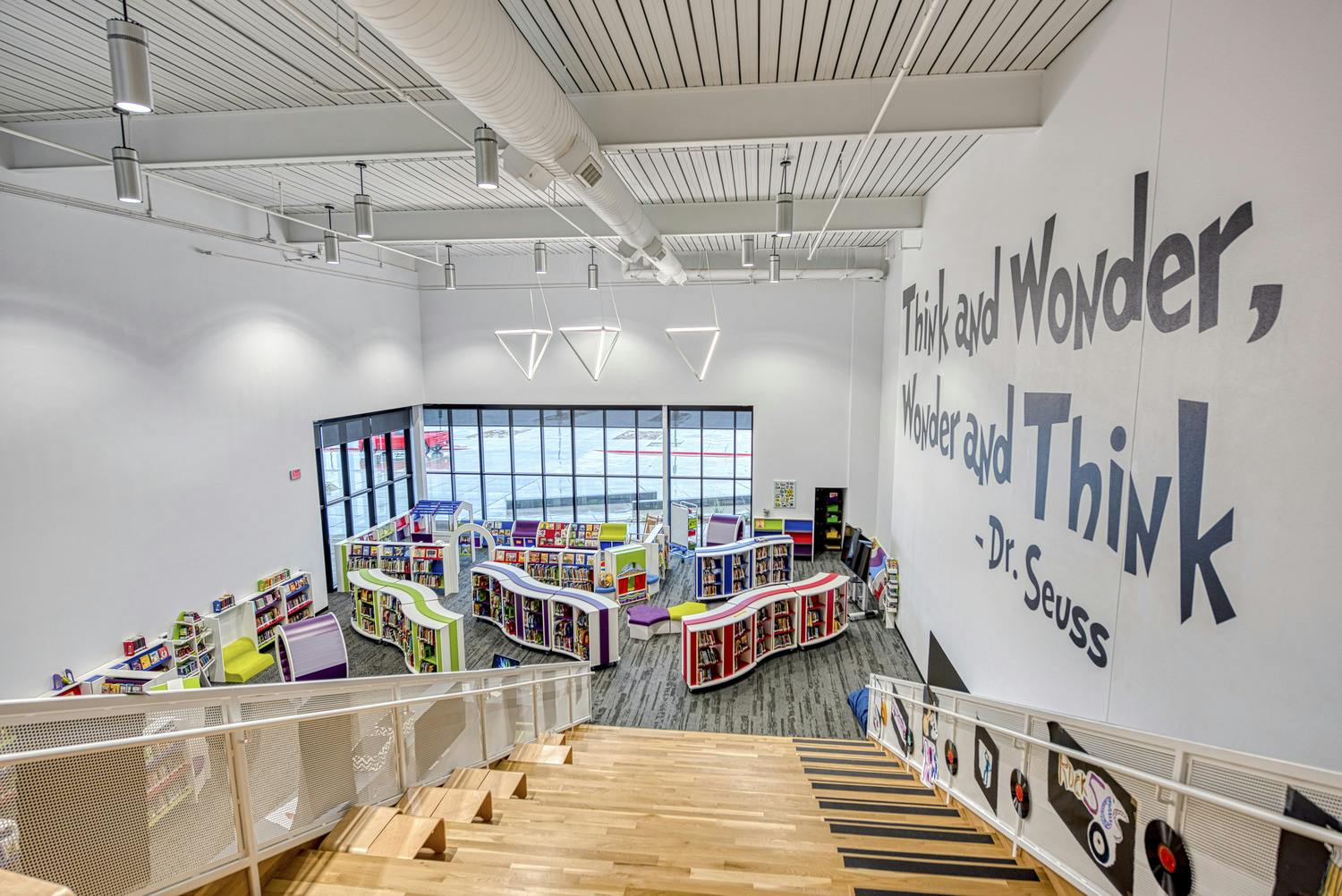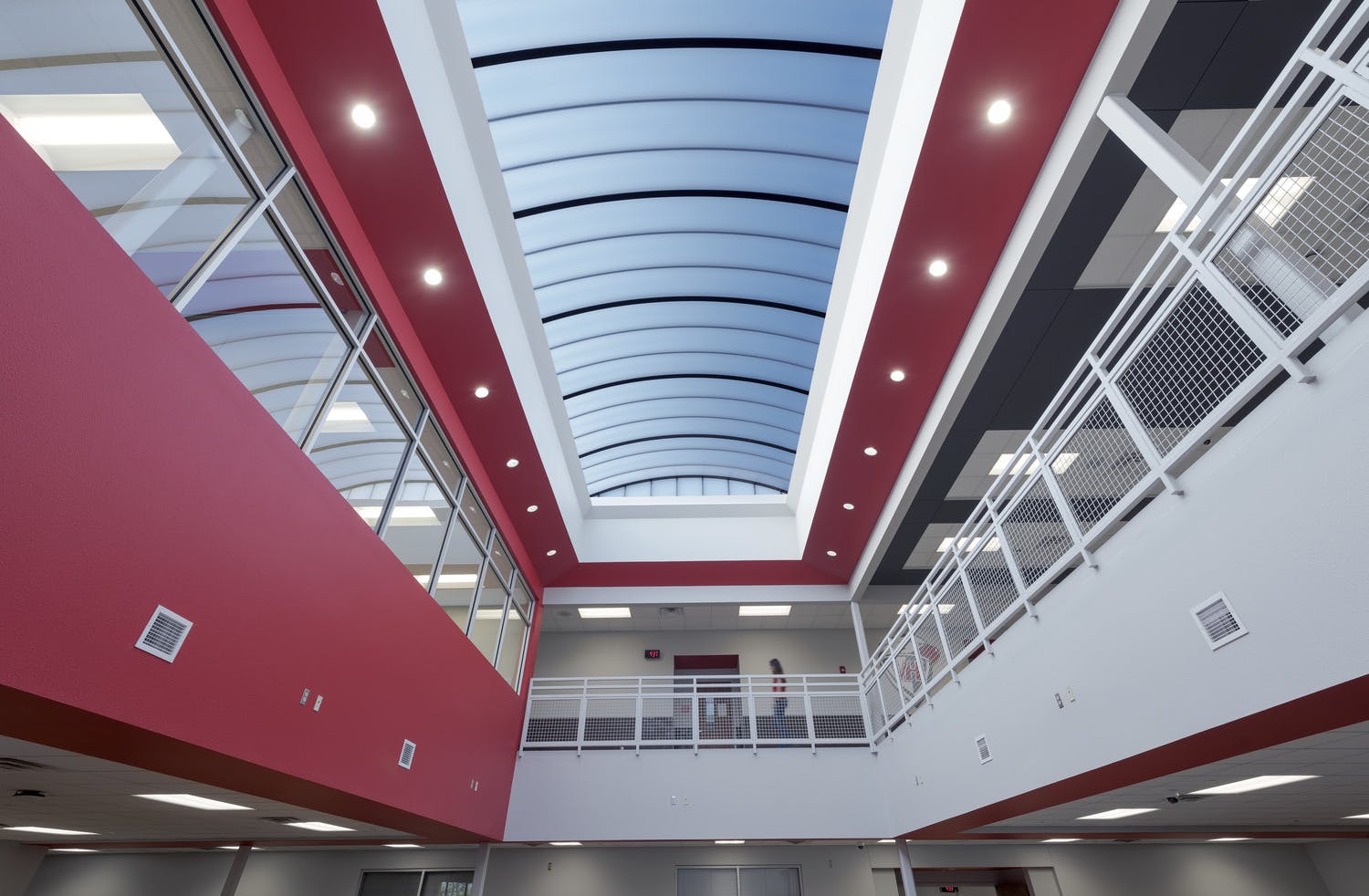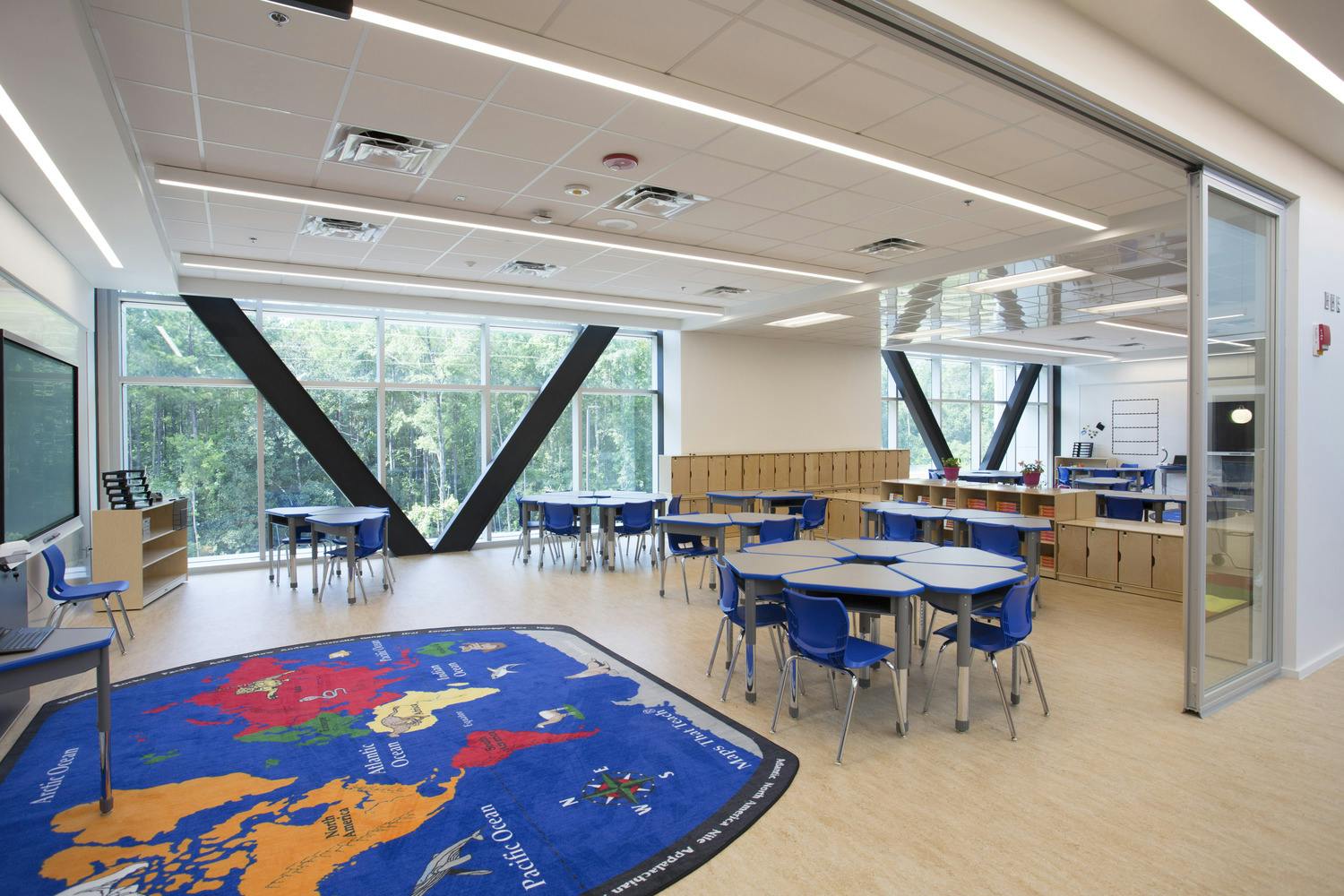Trends in K-12 Architecture: Taking Learning to the 21st-Century Level
Category: Architecture
Written By: Valerie Edgren
Date: February 4, 2020

Parkhill holds a unique position in regard to 21st Century educational design. To date, Parkhill has been a leader in implementing design concepts for a “future-ready” school in 16 Texas schools, three national and four international schools since 2011.
Parkhill’s Director of K-12 Education Design Mike Baker, with a handful of other thought leaders from across the nation, was invited to join the 21C school initiative with the Department of Defense Education Activity (DoDEA) in 2010.
“Many of the design principles analyzed and developed during the DoDEA work sessions were adapted and implemented by many of our clients in their school facility designs,” Mike said. As a result of Parkhill’s participation in developing DoDEA’s educational specifications, many public-school clients took notice of these dynamic changes in educational space design. A common narrative Parkhill heard from educators was to “get the building out of their way,” effectively allowing the educational setting to quickly and easily change so that educators could tailor how they delivered their lessons.”
This sent a powerful message to our sector staff. The realization that the built environment can actually impede teaching and learning led to many discussions of how to effectively allow the educational setting to quickly and easily change so educators could tailor had flexibility in how they wanted to deliver their lessons. Additionally, it sent a critical reminder that the burden of student academic success rests primarily on the teachers, and how critical it is to arm them with the tools they need in the design of their educational spaces.
Among Parkhill’s early 21C schools were Seagraves Elementary School, the first 21C school in West Texas, and McBride Elementary, in Fort Benning, Ga., one of DoDEA’s first 21C schools. This trend is still growing, with our work in four West Texas school districts. With each new educational project, our charge becomes to think about what the next iteration of future-ready design is beginning to look like.
Parkhill’s K-12 Sector Director David Finley knows through years of research that our current education system struggles with inertia, relevancy and performance. One needs to look no further than our standing in current international achievement testing, such as the National Assessment of Educational Progress (NAEP). Our educational system as a whole has seen some growth, but all would agree that these critical systems that make up our schools must continue to rise to meet the needs of our current and future students. Parkhill as part of the greater educational community is partnering with K-12 clients in helping to encourage innovative thinking and comprehensive design to improve learning overall.
David has been privileged to sit on both sides of the table in educational facility design. As an architect who became a chief operating officer for two school districts, he was afforded a unique opportunity to learn and understand the complexities found in Texas school districts. Now as a leader of the K-12 team, he brings three decades of work entirely in the realm of education, teaching and learning how environments affect teaching and learning. This experience has taught him that the teacher is always going to be key to any student’s success, and for teachers to teach effectively, the space in which they work must be flexible and usable. This kind of design is a challenge, but one that carries with it endless opportunities. This idea of education facility design requires a heart for continuous learning, and it is in that spirit that David has continued his educational pursuit as a doctoral candidate in education.
In addition to his professional experience, David is a father and husband to educators. He carries a real passion for this work since he sees firsthand the struggles and joys that come with teaching. David witnesses that a teacher’s world is in constant flux, including new students every year, different numbers of students, learning styles, and educational levels.
“The exciting piece is the work we are doing at Parkhill, the passion for education that our architects and engineers have, and their willingness to take some difficult steps alongside our educators,” David said. Education systems are always looking for a ‘silver bullet,’ and certainly, the design of schools is not one of them, but the impacts of thoughtful facility design should not be underestimated. In many ways, the product we produce as architects should be viewed as an asset, in fact, a ‘third teacher,’ as David W. Orr espoused in his book, ‘The Third Teacher: 79 Ways You Can Design to Transform Teaching & Learning.’ If we come to this place, then our work in the 21st Century and beyond can truly be a partnership in both general and specific educational journeys.”
Research shows there are several types of learners: visual, auditory, and kinesthetic. By creating new types of learning environments, educators are more able to fulfill different needs.
David says flexible spaces are key. An English lesson can tie with a history lesson, for example, so teachers expand the classroom to fit both classes. By folding out a partition, one teacher can teach an expanded class, and the other teacher can have one-on-one tutoring or counseling time with a student. The glass walls allow for observation, but also privacy during one-on-one sessions.
Other new trends include furniture that is moveable and doubles as storage, technological teaching tools, occupancy sensors that turn off when they are not being used, technology for distance learning, innovations in security, and use of daylighting or an abundance of stimulating natural light.
The design of the new Van Horn School in Van Horn, Texas, utilizes natural light. Studies show that this has a positive impact on learning.
Research in education is moving at a speed akin to our education systems. Driven by enhancements and understanding of technology, biology, brain science and physiology, the delivery of education must continue to change and adjust.
“What a time to be part of this dynamic, to pursue design excellence, while assisting in the education of a child,” David said. “As our schools demand flexibility, creativity, passion, and excitement, so should our thinking as school architects.”
All the moving parts surrounding our educational systems are connected by tangible and intangible means. Parkhill is willing to provide some tangible solutions that can have many intangible (and tangible) results for our K-12 partners.






